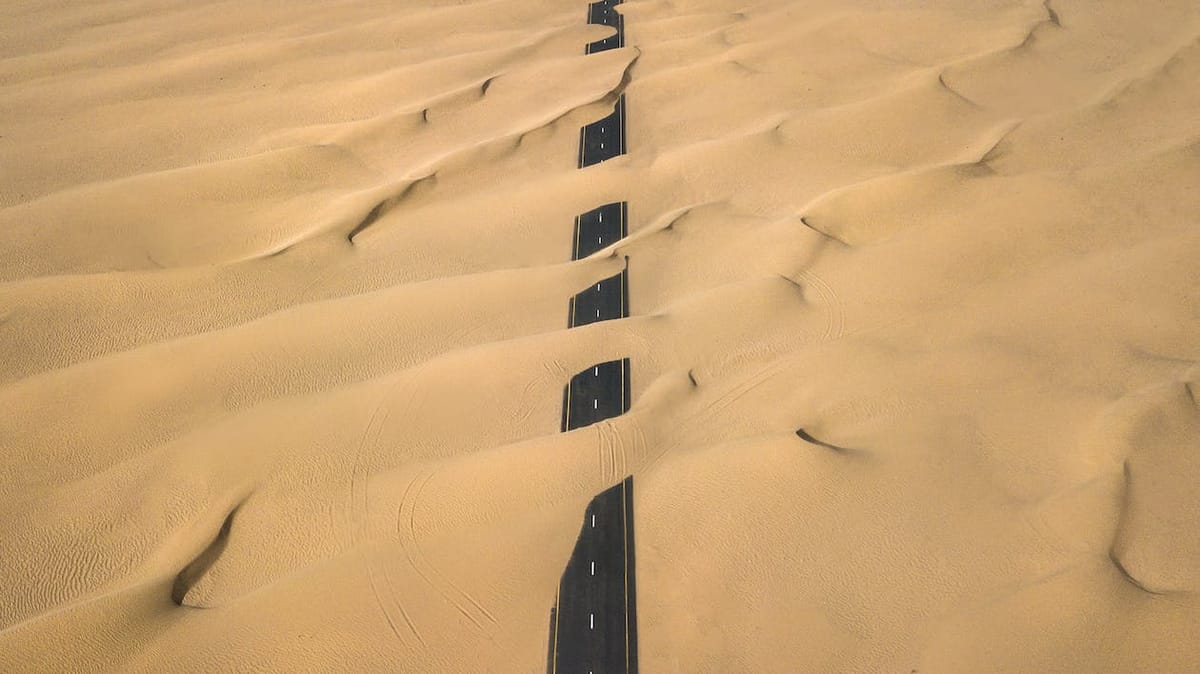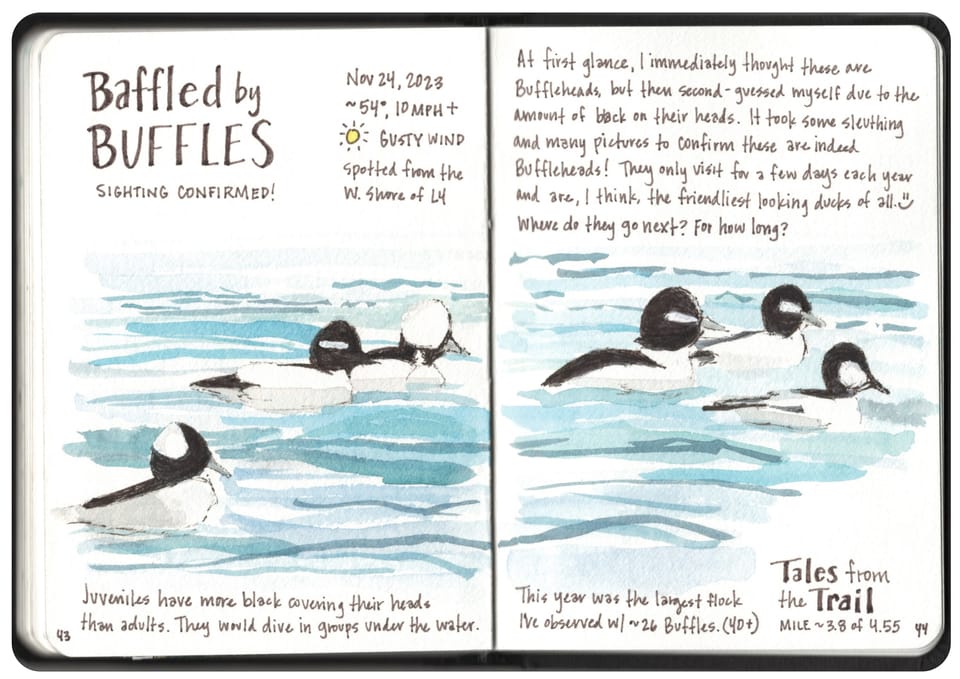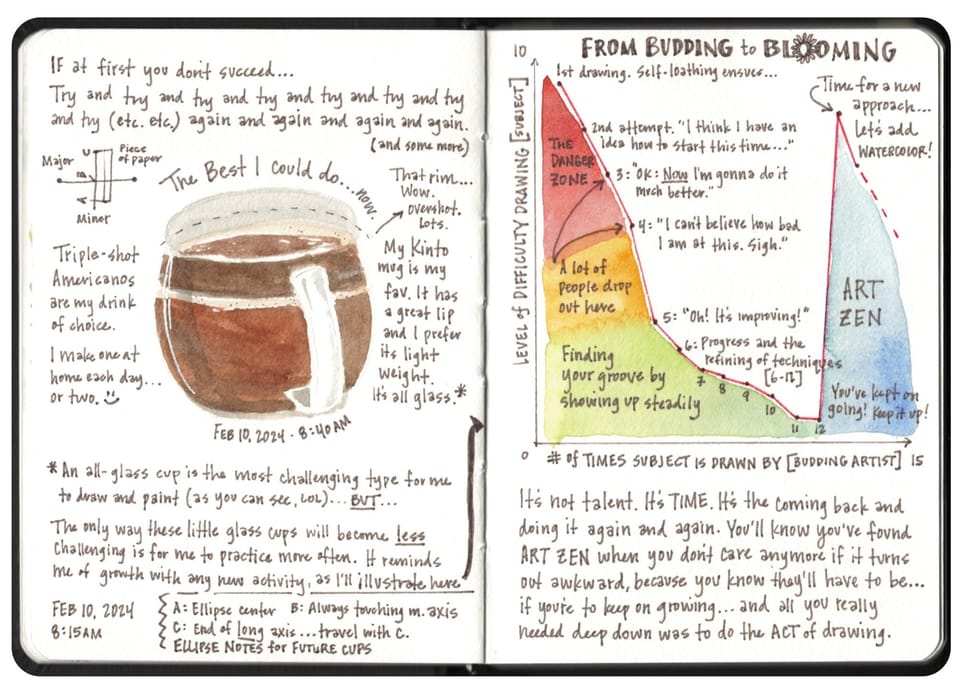Get out of your way
Struggling to transition from knowledge accumulation to knowledge application? Here’s when it might be a good idea to switch gears.

It’s easy to get sucked into the learning cycle.
One more book and then I’ll be ready to X.
One more video and then I’ll try X.
One more course and then I’ll start X.
There’s so much useful information at our fingertips that it’s never been easier to pile on the learning.
Sometimes, I wish I had access to the learning resources we have today when I was a kid. Back then, you had to go to the library and riffle through books to try to find what you were looking for. The selections then weren’t nearly as vast and instructive as what you can find today from the comfort of your living room on a cell phone.
I imagine Mini-Me would have loved being able to find so much so easily, but then, I wonder if all that access might have gotten in my way. 🤔
We live in an amazing time as far as access to information goes, but all this convenient access can also have a downside: information overload and paralysis by analysis. Even with learning, there can be too much of a good thing when we fail to balance how we learn.
Information accumulation is an important part of the learning process, but so too is application. When we get stuck in the accumulation phase of learning, we lose out on the opportunity to internalize what we’ve learned through experimentation and application – i.e. the “doing”.
This is where all that convenience might get in our way: The more convenient it is to sit and binge “how-to” videos, the more internal resistance we face with initiating the application process and practicing all those juicy tidbits we’re investing so much of our time into learning. Without practice, it starves.
I sometimes catch myself getting caught in the information accumulation stage with my art or more complex computer programs such as video editing software. I’ll pick a new medium or program, dabble, discover a challenge, then search for an instructional video or article to help me navigate the challenge. There’s nothing wrong with this process in general, but where it can get tricky is when the line gets blurred and I spend too much time in the accumulation phase.
So, how do you know when to switch gears and start applying what you’re learning? There’s no one-size-fits-all rule as topics vary widely and will require different levels of upfront accumulation, but a good rule of thumb is to start getting started as soon as you know enough to begin practicing safely.
Consider the complexity of the topic you’re learning: Are the stakes high or relatively low? This particular guide is meant for low-stakes outcomes (there’s a big difference between horseshoes and hang gliding). If the stakes for failure are null, get out there and start practicing as soon as possible.
If you’ve ever watched a cooking show on television you know that no matter how well you take notes or study the recipe, you’re not going to taste the food until you’ve gotten out your frying pan and cooked it yourself (or convinced someone else to cook it for you 😋).
If you’re new to drawing, keep your subject as simple as possible. Draw circles, work on your line weights, practice cross-hatching and shading. Grow from the basics by practicing the basics and avoid the trap of getting stuck in how-to books and videos. Studying the masters won’t help you draw a face any better than practicing it yourself. You’ve got to do it to internalize it.
Remember, how you learn matters, especially when you’re trying to develop a skill which requires practice. Don’t let accumulation get in the way of application and the deeper learning that comes with doing. Accumulate, practice, refine. Rinse and repeat.
Don’t let the way get in your way.
I listen to the music of Fred Rogers (Mister Rogers) at least once per week and one of my favorite Fred Rogers songs is, “You’ve Got to Do It”, which is a song about how you can never really do a thing until you’ve actually tried and done the thing yourself.
“You can make believe it happens,
Or pretend that something’s true.
You can wish or hope or contemplate
A thing you’d like to do.
But until you start to do it,
You will never see it through.
’Cause the make-believe pretending
Just won’t do it for you.
If you want to ride a bicycle
And ride it straight and tall.
You can’t simply sit and look at it
’Cause it won't move at all.
But it’s you who have to try it.
And it’s you who have to fall (sometimes)
If you want to ride a bicycle
And ride it straight and tall.”
Here’s the full song:
I’ve memorized the lyrics to this song and like to think about it whenever I feel myself straddling the line between accumulation and application (both are vital for learning). It’s a line many of us straddle. How about you?
Afterthoughts: I tend to get hung up on the video production accumulation treadmill. Sometimes, it takes a full-blown project to get me to crack open Adobe Premiere Pro and put what I learn into practice. It’s such an easy program to lose touch with if you don’t use it often, and I find I don’t engage with the software long enough to really develop the next level of muscle memory I’d like. I’ve considered making more videos just to keep me from getting rusty. 🤪



